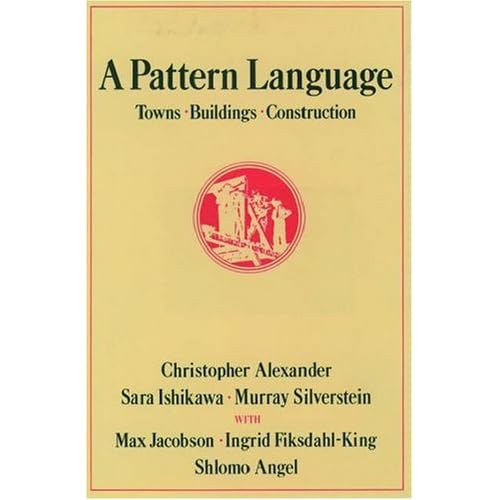Check out the very good post over at CultureGrrl on the recent NY Times coverage of the aftermath of the museum building boom. She recognizes that while there have been high profile problems, many museum building projects have been successful and that others are still in the works, just moving slower than they were.
Update: CulturalGrrl has an update with details on four museum building projects which are still underway, many taking advantage of very favorable construction costs.
observations, opinions, and the occasional rant
about museums and their visitors, programs, and architecture.
December 15, 2009
December 3, 2009
Museum Patterns
Christopher Alexander, architect and author of A Pattern Language, recently received the Vincent Scully Prize from the National Building Museum in Washington, DC. The prize recognizes "exemplary practice, scholarship or criticism in architecture, historic preservation and urban design." They note that "for nearly 40 years [Alexander has] challenged the architectural establishment, sometimes uncomfortably, to pay attention to the human beings at the center of design."
He may well have challenged the architectural establishment, but the architectural establishment has largely ignored that challenge. The architectural theory taught in the major architectural schools largely ignores human beings and their needs. Witold Ryybczynski has a good analysis of this in his most recent Slate column.
I've long been a fan of Alexander for just this reason–he thinks about how we shape space around people and their needs. Every architect will say "of course the building is designed for the people who use it." But too often, the aesthetic "needs" of museum visitors trump their actual need for a place that is inspiring, but also welcoming, comfortable, and easy to navigate.
I have often thought it would be useful to assemble Alexander-style patterns for museum buildings, with a particular focus on visitors. There are certainly already organizational tropes that we see everywhere, the store on the right at the exit being one of them, but real patterns would add a human dimension to museum design that often seems missing.
He may well have challenged the architectural establishment, but the architectural establishment has largely ignored that challenge. The architectural theory taught in the major architectural schools largely ignores human beings and their needs. Witold Ryybczynski has a good analysis of this in his most recent Slate column.
I've long been a fan of Alexander for just this reason–he thinks about how we shape space around people and their needs. Every architect will say "of course the building is designed for the people who use it." But too often, the aesthetic "needs" of museum visitors trump their actual need for a place that is inspiring, but also welcoming, comfortable, and easy to navigate.
I have often thought it would be useful to assemble Alexander-style patterns for museum buildings, with a particular focus on visitors. There are certainly already organizational tropes that we see everywhere, the store on the right at the exit being one of them, but real patterns would add a human dimension to museum design that often seems missing.
Subscribe to:
Posts (Atom)
